The Welsummer chicken is a relatively new breed–it was developed less than 100 years ago in the Netherlands town of Welsum. Despite its relative newness, this breed is quickly becoming popular with poultry hobbyists the world over. Here’s what you need to know about this distinctive breed.
This article will cover
- Background and History of Welsummer Chickens
- Welsummer Chicken Breed Standard
- Welsummer Chicken Temperament
- Welsummer Chicken Egg Laying
- Health Issues and Care
- 4 Tips for Raising Welsummers

Background and History of Welsummer Chickens
Whether you’re knowledgeable about chickens or are getting ready to welcome your first flock home, chances are good that you’ve seen a Welsummer before–Cornelius, the Kellogg’s rooster, is a cartoonized version of a Welsummer.
The breed was developed with the partridge pattern in mind–Dutch breeders crossed partridge varieties of several breeds, including the Cochin, Leghorn, and Wyandotte, with local birds that had been developed for agricultural use.
These breeds were also crossed with local birds that had been developed for agricultural use. The result was a medium-sized bird that was ideal for meat and eggs.
Though the breed was years in the making, it made its official debut at the World Poultry Congress in 1921. The breed received a warm reception, and by 1928, it had been exported to poultry enthusiasts in the United States and much of Europe.
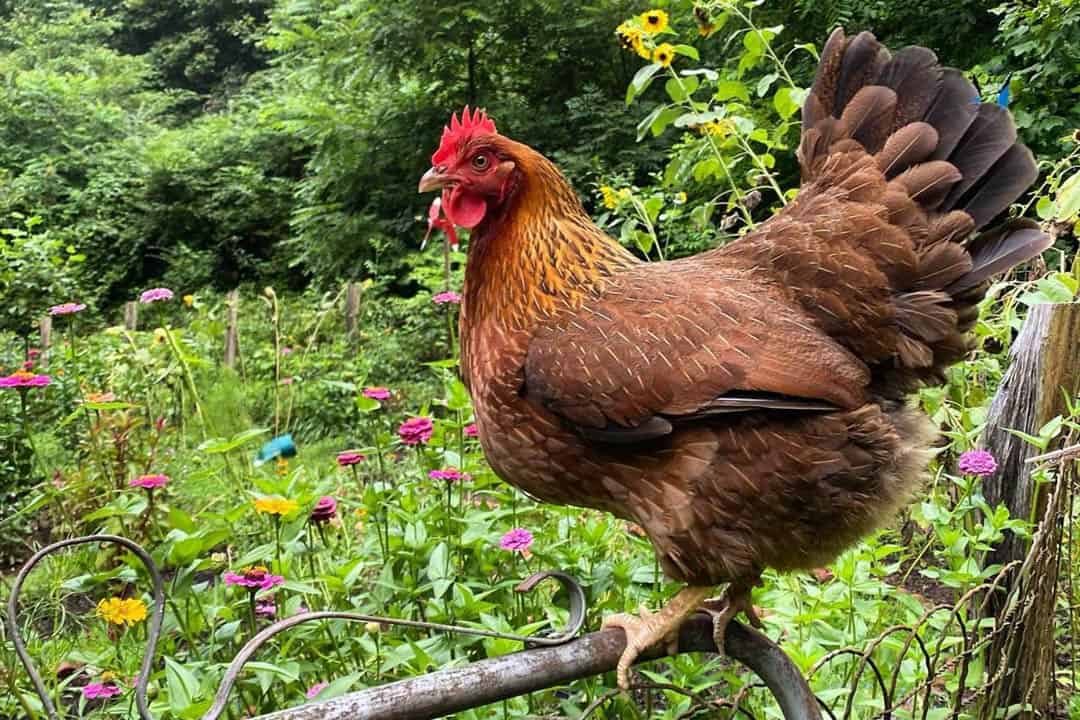
To this day, Welsummers continue to be most popular in Australia and the UK as backyard birds. They are even kept by Prince Charles of England as backyard pets.
The Welsummer was only accepted as an American Poultry Association breed in 1991, but they are growing in popularity with exhibition and hobby keepers alike.
There also is a bantam variety of the Welsummer. These birds were developed in the 1930s, shortly after the formal introduction of the large fowl Welsummer.
These birds are similar in appearance to the large fowl Welsummer with the exception of their smaller size. However, there’s another important difference–the smaller birds lay eggs that are a very light brown, unlike the distinctive deep brown of the larger Welsummer.
Welsummer Chicken Breed Standard
While partridge is the only accepted color for Welsummers according to breed standards, some breeders and keepers believe that “partridge” doesn’t do their intricate pattern justice.
Welsummers have a look that’s understated yet beautiful–their backs are a darker brown partridge, with their neck feathers patterned in a lighter, gold-tinged color, and their breasts are a warm, lighter chestnut brown. Their breasts are a warm, lighter chestnut brown.
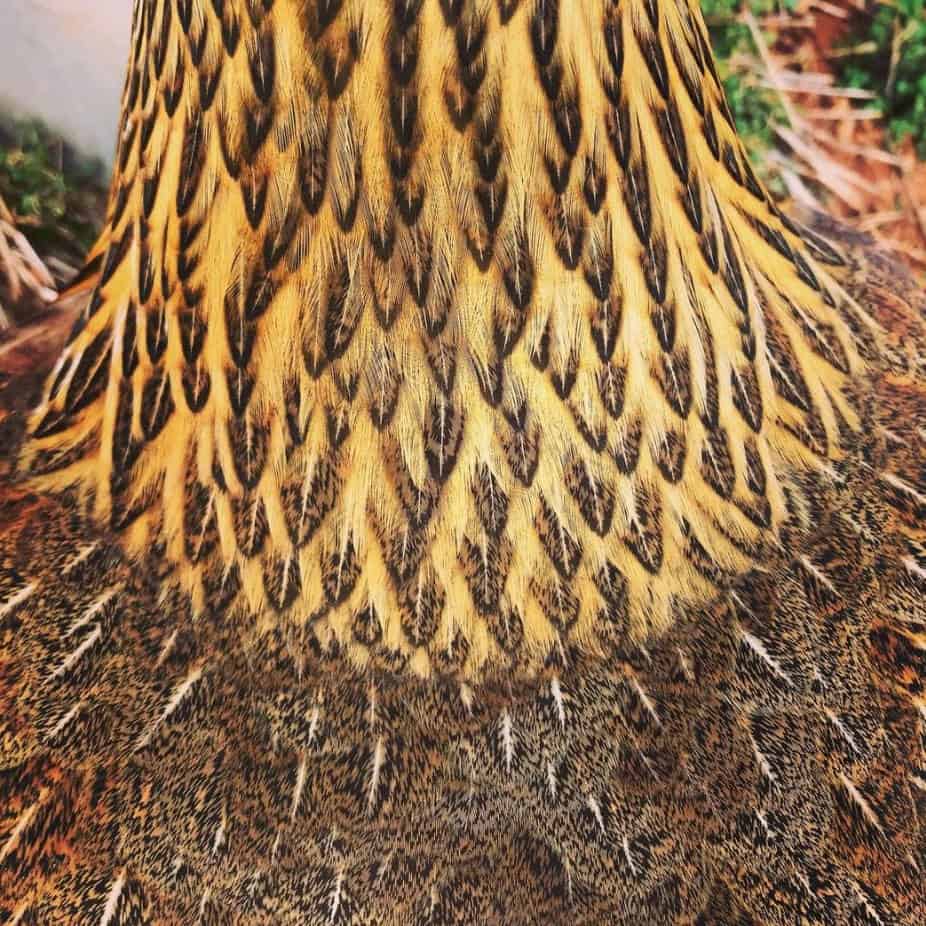
Roosters look like most people’s idea of a classic barnyard rooster, with bright hackles, a darker belly, and a large comb. Welsummers can also be distinguished for their bright yellow legs, which stand out from their darker bodies, and they have a single, pointed comb.
It’s important to note that, while most poultry associations only recognize partridge as an official color, you can also find the Welsummer in a silver duck wing variety.
With this color type, females look much like partridge Welsummers, but with head and neck plumage that is more silver. Males, on the other hand, have bright white hackles and saddle feathers with darker bodies and tails.
While Welsummers were developed as dual-purpose birds, they are lighter in size than many meat breeds. Roosters weigh around seven pounds, with hens weighing about six. Most breed standards describe them as “compact,” and they’re fairly well-muscled despite their smaller size.
Welsummer Chicken Temperament
While Welsummers are frequently described as active birds, they are also friendly and docile. They don’t tend to be as cuddly as some breeds like Silkies, but they nonetheless seem to tolerate handling well, and very tame birds will even eat out of your hand.
Welsummers also will typically fit in well with most flocks. They aren’t usually aggressive to other breeds, and most of them end up sitting in the middle of the pecking order.
While a few of them may rise to the top of the pecking order in a given flock, Welsummers tend to live harmoniously, and most seem to have more interest in foraging than they do picking fights with other chickens.
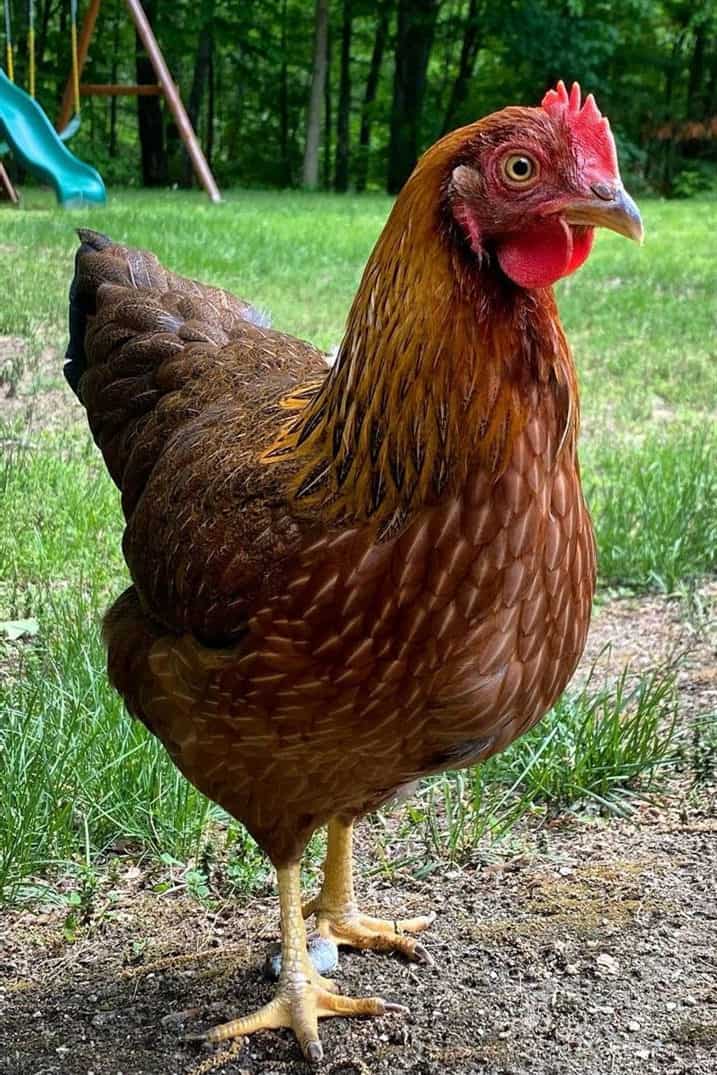
While these birds tend to live in harmony, they aren’t very maternal in nature. Welsummer hens are somewhat universally known for being poor mothers to chicks, so any chicks usually need a broody hen to protect them from other birds.
When you’re considering keeping Welsummers, one potential downside is their noise level. While they aren’t constantly loud, Welsummers are dramatic birds, and they may scream or squawk if they are agitated or disturbed.
Aside from this, though, they are usually very easy birds to keep, and their temperament makes them a good choice for poultry keepers who also have children or who want to be able to handle and interact with their chickens.
Welsummer Chicken Egg Laying
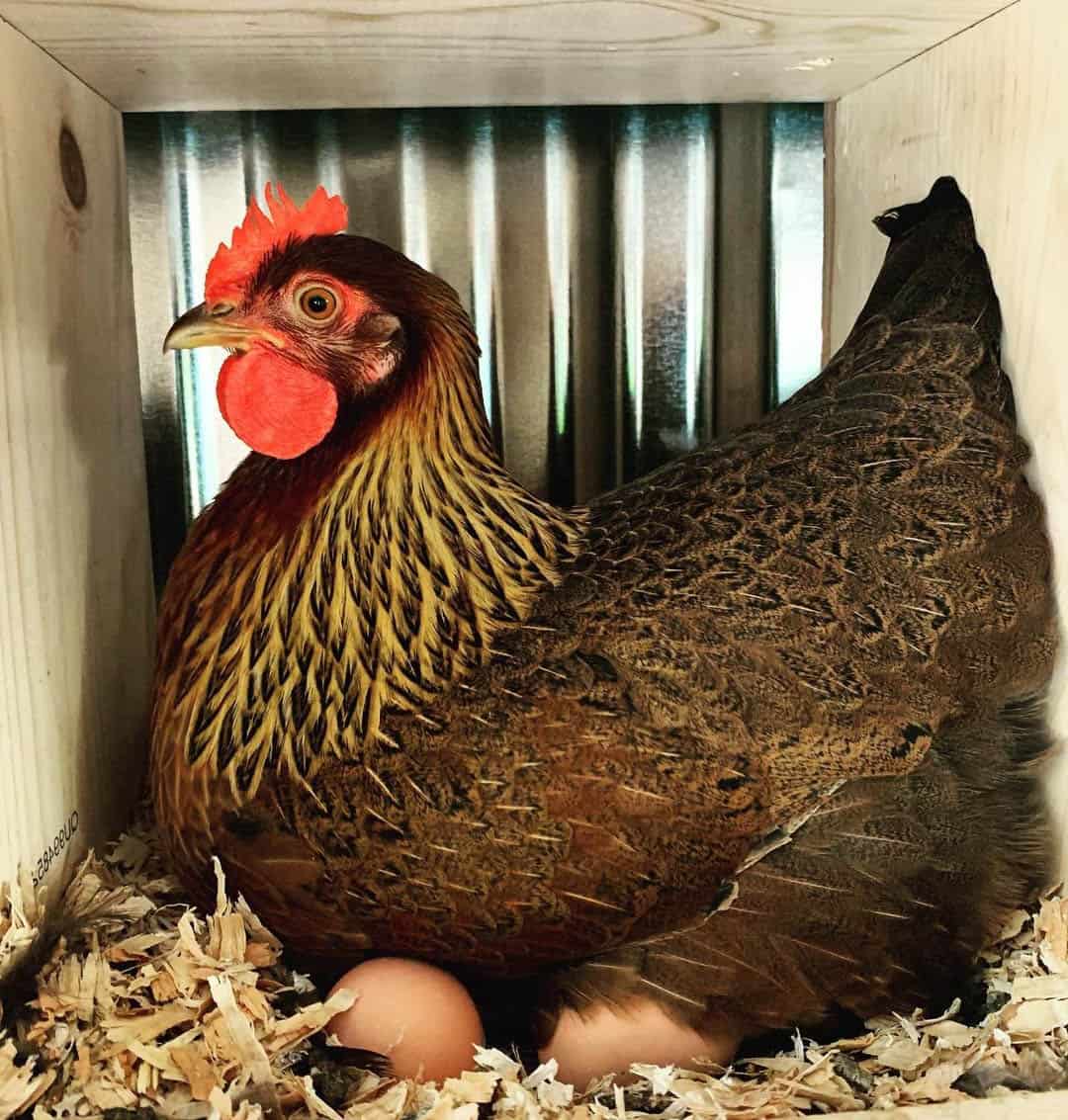
Welsummers lay distinct and beautiful eggs–they are a deep terra-cotta color that is different from a typical brown egg. However, they aren’t as reliable as some other breeds, and their egg production varies dramatically.
Some Welsummers may lay only around 160 eggs per year, while others lay close to 250. They tend to lay less in colder months, which isn’t uncommon, especially in breeds that haven’t been developed solely for egg production.
Generally speaking, birds that are more “pure,” or closer to breed standard, tend to lay less than others.
If you intend to breed Welsummers, you probably will need either an incubator or a broody hen. Welsummers rarely are inclined to incubate their own eggs, and many hens are also disinterested in mothering their chicks.
Breeding Welsummers comes with a distinct advantage, though–due to the way they are patterned, you tell the sexes of chicks as soon as they hatch.
Health Issues and Care
Welsummers were developed in European climates, and they tend to be hardy, especially when it comes to cold resistance. However, there is one thing to be especially wary of in winter. Since Welsummer combs tend to be large, they are prone to frostbite and other types of cold damage.
Make sure your birds have a warm shelter away from the elements if the temperature hits freezing often. Frostbite is very painful, and it can also cause lasting and noticeable damage to the birds’ combs.
Welsummers aren’t especially heat intolerant, but like many large-bodied birds, they are in danger of overheating in very hot weather. Make sure they have access to shade, that their coop is well ventilated, and that they have access to plenty of water when the weather is warmer.
Lastly, while Welsummers are calm and may enjoy being handled, they are active birds and will appreciate space to roam. If your birds can’t be free-range all the time, making sure they have a coop with an attached run will offer them some foraging and dust bath space.

4 Tips for Raising Welsummers
Welsummers are usually easy to keep, and they don’t generally need much different care than any other breed of chicken. That said, here are some tips to keep in mind as you raise your flock.
1. Choose Your Flock Ratio Early
This tip isn’t an absolute must, but it may be helpful for keepers in certain situations. In some urban environments, you may only be able to keep hens, and for a backyard flock, you may prefer only one or two roosters.
Because of their feathering pattern, baby Welsummers are auto-sexed, meaning you can tell males and females apart. If you are choosing chicks for a flock, make sure you understand feathering differences so you can choose the right sex ratio for your flock.
2. Make Sure Your Birds Are Socialized
Welsummers are usually docile birds, but they don’t tend to seek human contact on their own. If you want your flock to be more handleable, be sure to spend time handling them and being around them when they are young.
If you have a very large flock, even spending time around the birds will be beneficial for them. This will let them get used to the sound of your voice, and they will soon realize that you aren’t a threat.
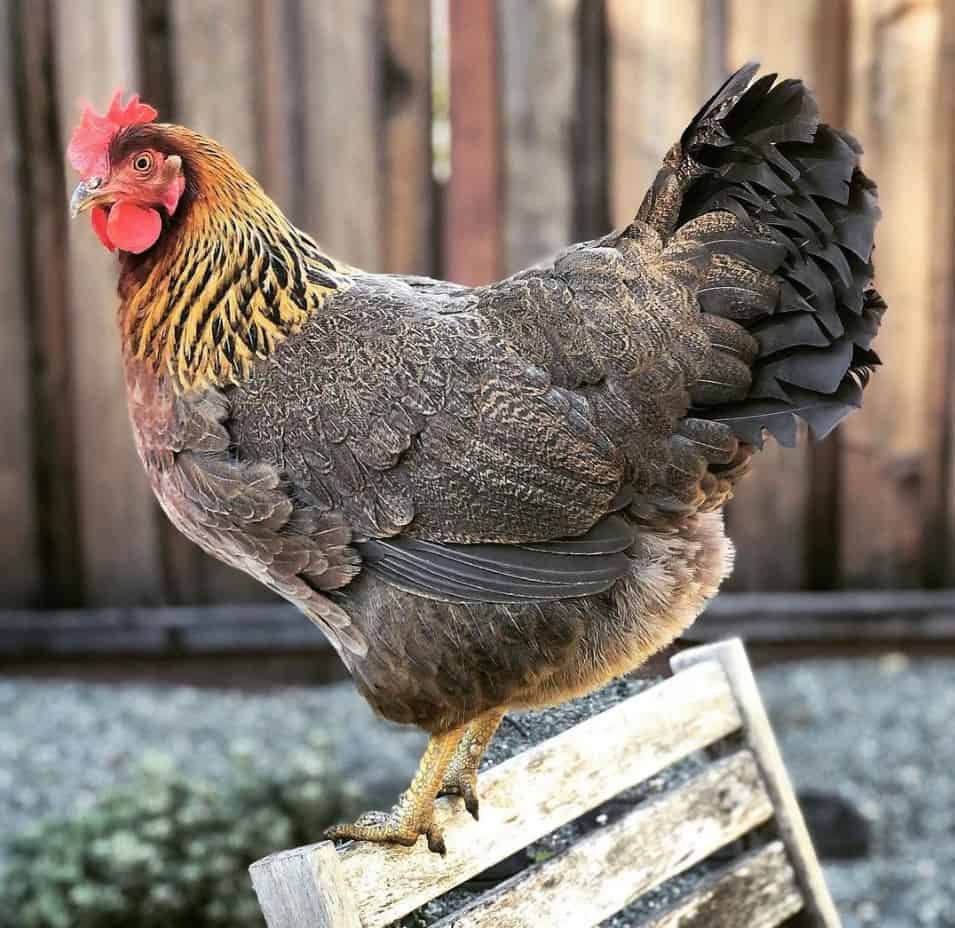
3. Make Sure They Have Space to Forage
Welsummers are hardy birds who can sprint quickly when they need to. This makes them a suitable free-range breed. However, if you can’t let your birds be free-range, do make sure they have plenty of time to forage.
If your birds have a smaller coop, they will appreciate being able to roam outside of it, even for a few hours per day. Ideally, birds who can’t be free-range should have a coop with an attached run. This will let them forage while protecting them from any potential predators.
4. Be Mindful of Climate
Welsummers do best in cooler climates, making them suited to the northern United States. However, they can still be kept in warm climates, as long as they have access to cooler, shaded areas and plenty of water. If you live in a warm climate, take extra care to ensure their coop is well ventilated.
Summary
Welsummers are truly beautiful birds who make a great choice for those wanting friendly chickens and beautiful, distinctive eggs. These birds have an excellent temperament for the backyard poultry keeper, and their vibrant personalities will add some interest to any flock.
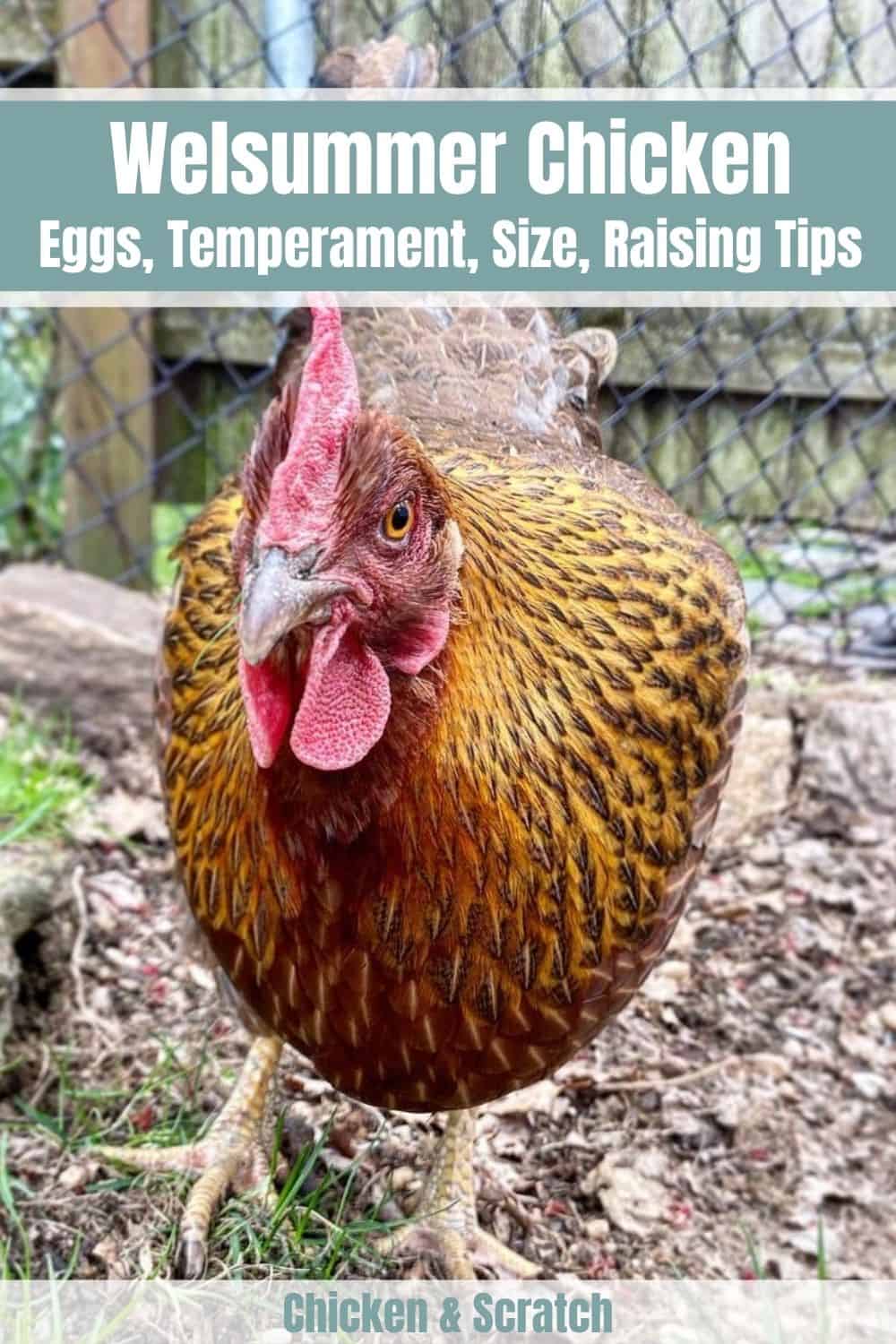

Joseph Hudson has been raising chickens for over 15 years. In 2018, he completed the Agriculture & Natural Resources program at Mt. San Antonio College. He currently raises over 1400 chickens on his 7.5-hectare farm. He keeps sharing his experience on raising healthy and happy chickens on Chicken Scratch The Foundry.







